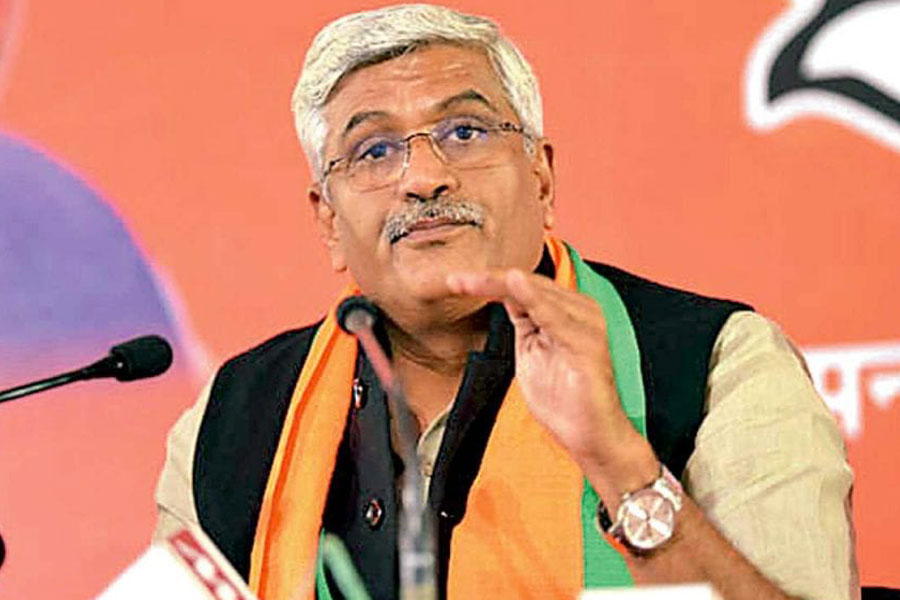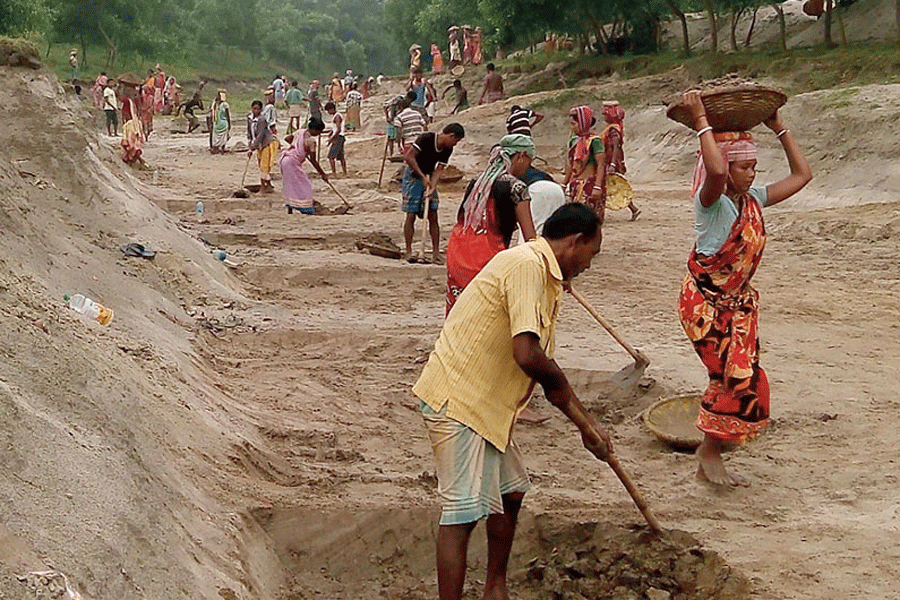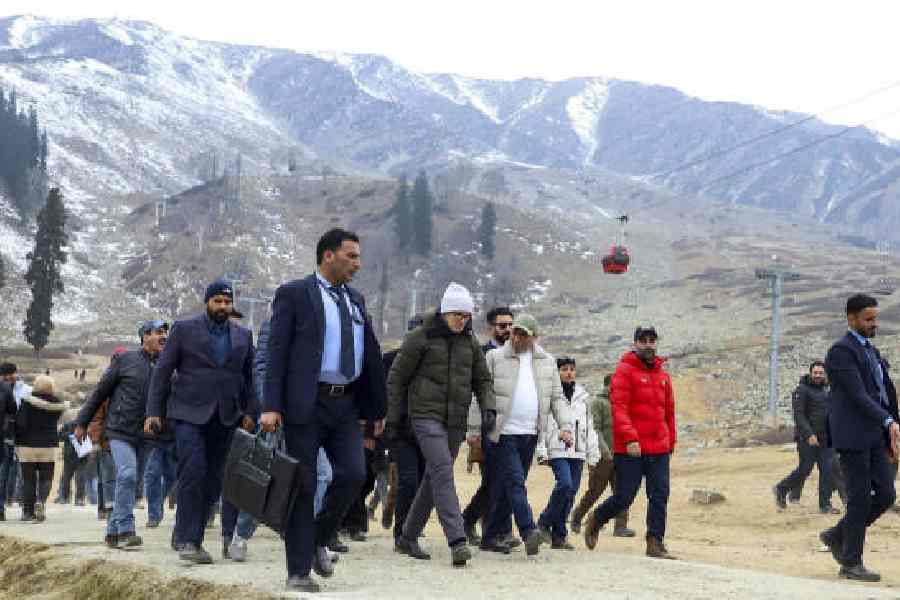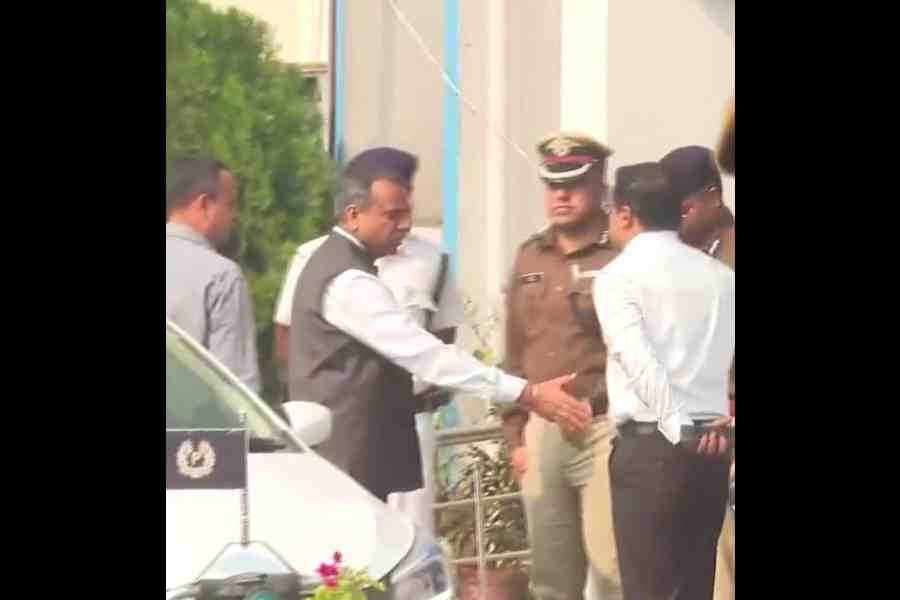Shillong, July 15: The proposed uranium mining project in Meghalaya, which has been hanging fire for decades because of stiff opposition from various anti-uranium mining groups, is unlikely to take off soon.
The Uranium Corporation of India Limited (UCIL) has been pushing hard with the Centre and the Meghalaya government to allow it to mine uranium at Kylleng-Pyndeng-Sohiong, the uranium-rich area near Mawthabah in West Khasi Hills district.
The new government at the Centre, led by Prime Minister Narendra Modi, is yet to express its interest to push the controversial project forward while the Meghalaya government has been maintaining silence on the issue so far.
Recently, when journalists posed a question to Meghalaya chief minister Mukul Sangma on the uranium issue, he said, “I will reply to this question next time.”
Unlike in the past years, the Khasi Hills Autonomous District Council (KHADC) under the present executive committee led by regional parties, has made its stand clear that in no way would the council allow mining of uranium to take place at Kylleng-Pyndeng-Sohiong.
“We would like to make our stand clear that we will never allow mining of uranium to take place,” current KHADC chief executive member (CEM) Ardent M. Basaiawmoit said today.
In the past few years, the KHADC, under the Congress, especially when H.S. Shylla was the CEM, has been vocal about its stand on uranium mining.
Basaiawmoit said the council would find out if the past executive committee led by Shylla had accorded a no objection certificate (NOC) to UCIL to mine uranium in West Khasi Hills.
“We will find out and if there is such permission, the council will not hesitate to cancel the NOC,” Basaiawmoit said.
During the tenure of Shylla, UCIL had even sanctioned Rs 20 crore to KHADC to facilitate construction of a 20km road connecting Wahkaji and Mawthabah areas located in the vicinity of the proposed uranium project site (Kylleng-Pyndeng-Sohiong).
Basaiawmoit, however, said the Wahkaji-Mawthabah road project has no link with the proposed mining of uranium.
“If the road is meant for providing connectivity to the remote area just for the sake of facilitating uranium mining, we will not allow it to happen,” he said.
He also said the KHADC was engaged as contractor for constructing the road and the fund to the council was released by the UCIL only based on submission of an utilisation certificate.
In 2009, the UCIL had also earmarked Rs 209 crore to take up healthcare, power, drinking water, educational institutions and roads under the “pre-mining development project” in the first phase in few underdeveloped areas of West Khasi Hills.
The state cabinet had also decided to lease out 422 hectares in the uranium-rich area to UCIL so that the company could start the pre-mining development project in the area.
However, in November 2009, the “pre-mining development project” was shelved by the Meghalaya government following opposition from various anti-uranium mining groups which alleged that the project was a step forward to facilitate UCIL to mine uranium.
While putting on hold the “pre-mining development project”, the state government constituted a 33-member Joint Committee on Uranium Mining in Meghalaya (JCUMM) to examine various issues related to the impact that uranium mining project in West Khasi Hills would have on health, environment, safety and other issues concerning radiation.
Since then, both the Centre and the state government have been silent on the uranium issue.
The proposed mining of uranium has been hanging fire for more than two decades with prominent NGOs, including the Khasi Students Union and political parties vehemently opposed to the project. Their argument is that it would lead to health hazards because of radiation and degradation of environment, besides opening the floodgates for outsiders into the tribal state.
The explorations by the Atomic Minerals Directorate for Exploration and Research done two decades ago estimated that there could be over 16,000 tonnes of uranium ore.
Similarly, a few years ago, the UCIL had sought an NOC from the ministry of environment and forest to look for a possibility of uranium in Balpakram National Park (BNP). The park is one of India’s bio-diversity-rich areas, home to some of the world’s endangered flora and fauna located in Meghalaya’s South Garo Hills district.
The National Board for Wild Life (NBWL) had decided to undertake a site inspection of uranium deposits in BNP in response to the proposal submitted by the department of atomic energy to de-notify an area of 8 square km at Rongcheng Plateau in BNP for exploratory uranium mining.
However, the NBWL rejected the proposed uranium mining project after stiff opposition from various quarters, including the Garo Hills Anti-Mining Forum, a conglomerate of various NGOs.










